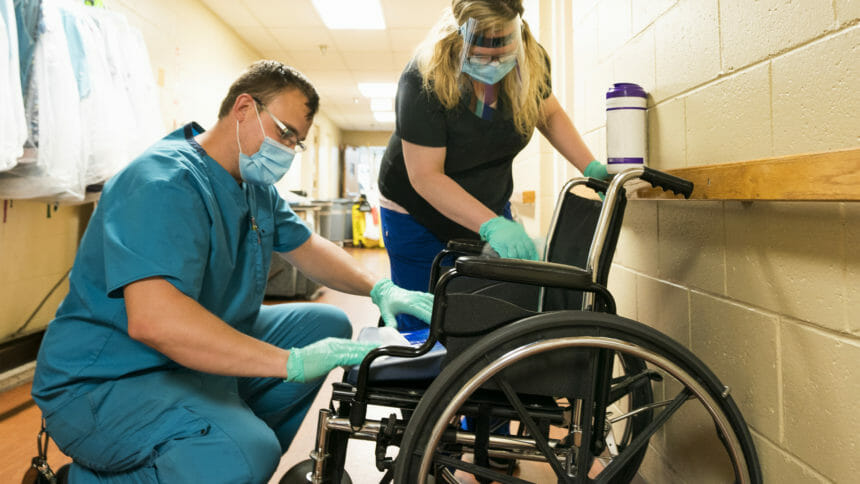
With an early death rate for seniors 23 times higher in nursing homes than in other settings, COVID became synonymous with what many saw as critical failures in long-term care.
But ahead of Saturday’s third anniversary of the pandemic’s official declaration, one infection preventionist who spent much of COVID’s first year on frontlines in multiple states reflected on the challenges and “a silver lining” for the sector.
Prior to COVID, facilities had policies and procedures on infectious disease outbreaks but little experience in putting those plans into effect. Now, Buffy Lloyd-Krejci, DrPH, a consultant with IPC Well, told McKnights Long-Term Care News, “nearly everyone has.”
The CDC was given $1.25 billion in federal funds to create IPC infrastructure to fix the problems that led to widespread infections to stop another COVID or other emerging disease swarm. More than $500 million has been earmarked for nursing home and “strike force” teams to work on-site with facilities.
“COVID-19 is not over. It is endemic and here to last,” Lloyd-Krejci said Wednesday, adding that her team continues to see outbreaks in facilities that can be as high as 75 residents and staff in one building. Several Massachusetts providers were working through similar-sized outbreaks this week.
Vaccines, support changed course
Although CMS data shows that 85.5% of nursing home residents have completed their primary vaccine course, Lloyd-Krejci said updated booster rates are low, which is contributing to spread. About 54% of residents are considered up-to-date on shots, while the share of staff up-to-date sat at 22.6% through the week of Feb. 26.
Nursing homes are also battling a labor shortage that could be compounded soon by a federal minimum staffing mandate.
The Kaiser Family Foundation on Tuesday released insights from three years of polling that shows misinformation and “confusion” about COVID remain common and that half of people surveyed —healthcare workers included — said that the pandemic harmed their mental health.
“The entire world was not prepared for COVID-19,” said Lloyd-Krejci, who authored “Broken,” a book about her COVID experiences and policy challenges. “Penalizing facilities for not being prepared and implementing best [infection-control practices] was wrong and did a lot of harm to the industry. My team, along with many others, were advocating for support, not punishment. Fortunately, three years later, we are seeing more and more IPC support.”
Saturday marks the third anniversary of the World Health Organizations’ COVID-19 pandemic declaration. On March 13, 2020, the Centers for Medicare and Medicaid Services recommended that nursing homes cancel in-person dining and other group activities as well as closing facilities to visitors and non-essential personnel. A report on “excess mortality” due to COVID at nursing homes published in January 2022 by the National Center for Biotechnology Information found that while those measures “very well may have prevented deaths … many have questions whether those gains came at a cost.”
In addition to underscoring the devastating effects of isolation, that study calculated that nursing home residents were 23 times more likely to die of COVID than peers in non-congregate settings. By the end of 2020, more than 12% of the nursing home populations in Connecticut, Indiana, New Jersey, Rhode Island, and South Dakota had died from the virus.
Much of the blame was laid at the feet of staff, who went from being heroes to being blamed for factors that were often out of their control. Three years in, Lloyd-Krejci said, concerns about infection control, supply issues and the workforce crisis continue to take a toll on the sector and staff spread more thinly than ever.
“Our healthcare staff are wounded,” Lloyd-Krejci said. “We have been through a war with an invisible enemy for three years and we simply cannot go on as if nothing ever happened. We must offer the staff wellness support and time off to recover, challenging of course in the midst of a severe staffing crisis. We need to take really good care of the staff that we have so they can heal and deliver high quality of care to the residents.”



